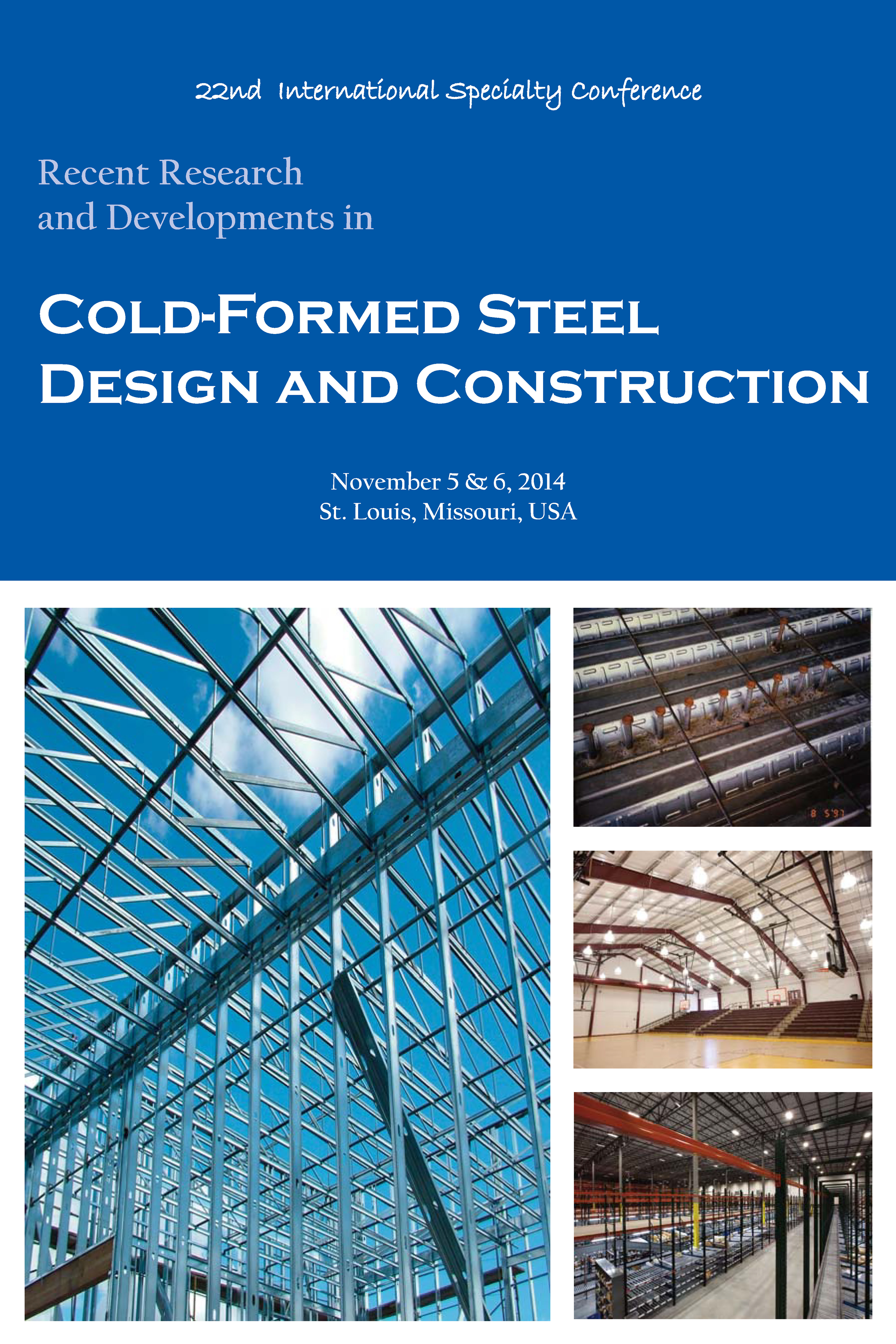Session Dates
05 Nov 2014
Abstract
The structural strength of cold-formed steel lipped channels under combined axial force and biaxial bending moments has been predicted by geometric and material nonlinear collapse analyses performed in ABAQUS and compared to both current, and a newly proposed, beam-column design method. The ABAQUS analyses utilizes a validated modeling protocol calibrated against previous testing by the authors, and including residual stresses and strains, and geometric imperfections; as well as, appropriate cross-section dimensions, member length, and boundary conditions. A total of 75 different lipped channel cross-sections have been selected and the capacity of the beam-column member has been examined under 127 combinations of actions in the P-M1-M2 space (axial load, P, and major-axis, M1, and minor-axis, M2, bending moments). The results have been used to evaluate the current beam-column design method and validate a new Direct Strength Method (DSM) approach for cold-formed steel beam-columns. The newly proposed method provides means to incorporate more realistic stability analyses of cross-sections under the applied actions, where the current design methods include only a linear prediction of the combined actions using “column strength” and “beam strength” as anchor points. Correspondingly, the reliability of both current and newly proposed methods has been evaluated. The newly proposed extensions to the Direct Strength Method show a potential to realize a sizeable strength increase in many situations, and follow the overall trends in the data (P-M1-M2 surface) well; however, additional advancement is needed to realize the complete benefits predicted in the finite element models.
Department(s)
Civil, Architectural and Environmental Engineering
Research Center/Lab(s)
Wei-Wen Yu Center for Cold-Formed Steel Structures
Sponsor(s)
American Iron and Steel Institute (AISI)
Metal Building Manufacturers Association (MBMA)
Meeting Name
22nd International Specialty Conference on Cold-Formed Steel Structures
Publisher
Missouri University of Science and Technology
Document Version
Final Version
Rights
© 2014 Missouri University of Science and Technology, All rights reserved.
Document Type
Article - Conference proceedings
File Type
text
Language
English
Recommended Citation
Torabian, Shahabeddin; Zheng, Baofeng; and Schafer, Benjamin W., "Development of a New Beam-Column Design Method for Cold-Formed Steel Lipped Channel Members" (2014). CCFSS Proceedings of International Specialty Conference on Cold-Formed Steel Structures (1971 - 2018). 1.
https://scholarsmine.mst.edu/isccss/22iccfss/session04/1
Development of a New Beam-Column Design Method for Cold-Formed Steel Lipped Channel Members
The structural strength of cold-formed steel lipped channels under combined axial force and biaxial bending moments has been predicted by geometric and material nonlinear collapse analyses performed in ABAQUS and compared to both current, and a newly proposed, beam-column design method. The ABAQUS analyses utilizes a validated modeling protocol calibrated against previous testing by the authors, and including residual stresses and strains, and geometric imperfections; as well as, appropriate cross-section dimensions, member length, and boundary conditions. A total of 75 different lipped channel cross-sections have been selected and the capacity of the beam-column member has been examined under 127 combinations of actions in the P-M1-M2 space (axial load, P, and major-axis, M1, and minor-axis, M2, bending moments). The results have been used to evaluate the current beam-column design method and validate a new Direct Strength Method (DSM) approach for cold-formed steel beam-columns. The newly proposed method provides means to incorporate more realistic stability analyses of cross-sections under the applied actions, where the current design methods include only a linear prediction of the combined actions using “column strength” and “beam strength” as anchor points. Correspondingly, the reliability of both current and newly proposed methods has been evaluated. The newly proposed extensions to the Direct Strength Method show a potential to realize a sizeable strength increase in many situations, and follow the overall trends in the data (P-M1-M2 surface) well; however, additional advancement is needed to realize the complete benefits predicted in the finite element models.



